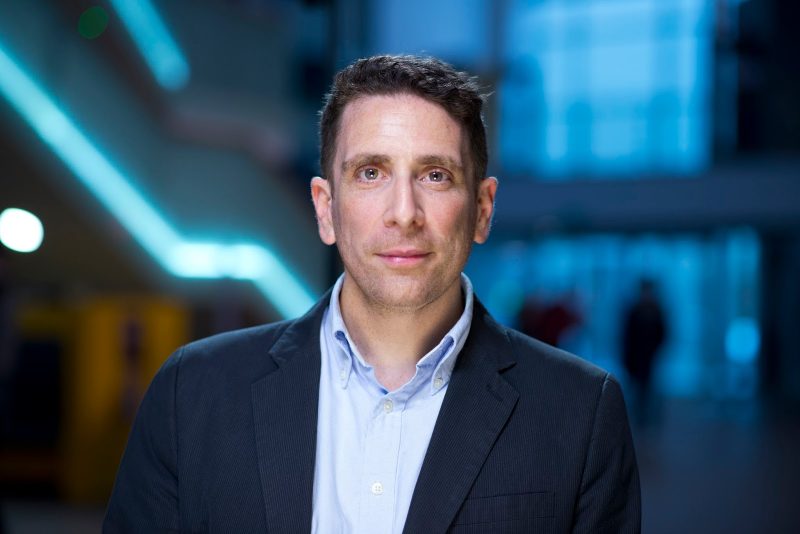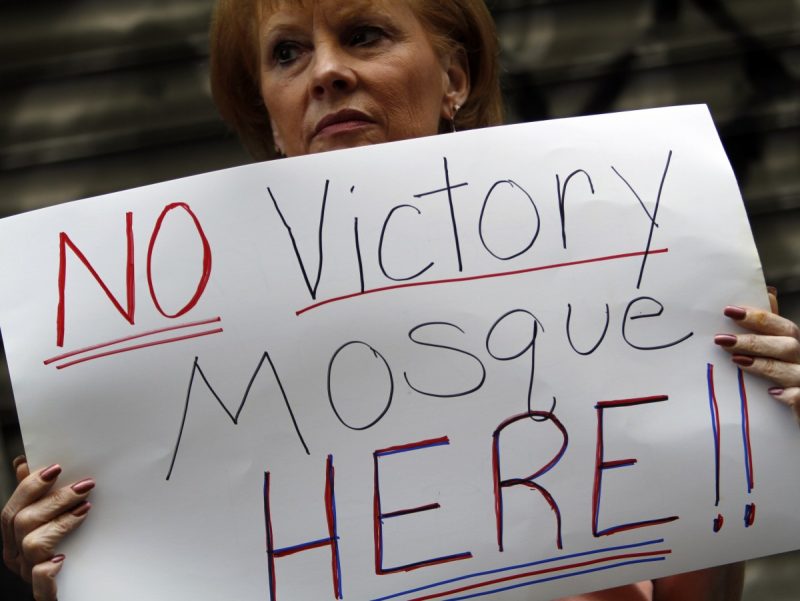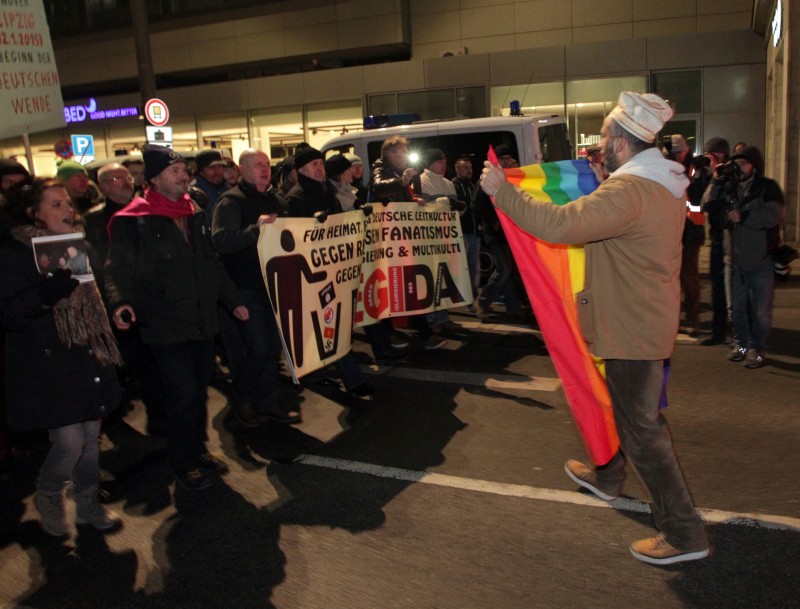Dr. James Renton: The Shared Story Of Islamophobia & Anti-Semitism

Dr. James Renton, Reader in History at Edge Hill University, UK. (James Renton)
by Milena Rampoldi, MintPress, June 22, 2016. Dr James Renton is Reader in History at Edge Hill University, UK, and co-editor, with Ben Gidley, of “Antisemitism and Islamophobia: A Shared Story?” which is forthcoming with Palgrave Macmillan.
Dr. Milena Rampoldi, ProMosaik: How would you define anti-Semitism and Islamophobia. Which are the common aspects, what are the main differences between them?
Dr. James Renton: At base, we can use the terms anti-Semitism and Islamophobia as straight forward labels for anti-Jewish and anti-Muslim racisms. But can we offer a fixed definition of these two fields of prejudice? The histories of the terms themselves tell us something of value in this connection. Within these stories, we find helpful insights into the complex relationship between the two: their differences, similarities, and, significantly, connections.
It is essential, however, that any such discussion of this subject acknowledges that European ideas about Jews and Muslims, about Judaism and Islam, do not stand still. They are dynamic, like any field of human thought. We must not treat them as fixed prejudices that operate outside of time, or indeed place. Certainly, both racisms possess very powerful continuities, which are hugely important. But the interplay between these underlying structures of thought and the dynamism of cultural, political, social, and economic change must not be ignored.
The word ‘anti-Semitism’ was invoked at the end of the nineteenth century, at a time in which the pseudo-science of race predominated in European political thought. Jews and Judaism were at the forefront of Europe’s imagined political problems in this period— or “Questions” to use the terminology of the day— that demanded solutions. The process of Jewish emancipation (incomplete as it was) in central and Western Europe became a focus of ire in these zones as societies grappled with profound economic and political crises and transformation: from depression and warfare in Europe (particularly Germany’s defeat of France in 1870) to concomitant escalating conflict between European imperial states over resources and territory in Africa and Asia.
‘Islamophobia’ by contrast was widely adopted as a term in European political discourse at the end of the twentieth century. It belongs principally to the Europe of post-colonial migration, multi-culturalism, and the project of European unity. It has come into its own as a named racism at a time when secularism is no longer the assumed framework of European and global politics; and when the struggle for power in Islamic lands in Western Asia and Northern Africa lies at the center of Europe and the West’s global politics. In addition, the naming of ‘Islamophobia’ from the end of the 1990s coincided with Europe’s adoption of the fight against ‘anti-Semitism’ as a defining feature of what it means to be civilized and a part of the global West.

Suzie Buck, of Muskogee, Okla., demonstrates in front of a proposed site for an Islamic cultural center, Friday, Aug. 27, 2010 in New York. (AP/Mary Altaffer)
The terms belong to two very different histories, therefore. Nonetheless, the origins of the word ‘anti-Semitism’ reveals that European prejudices towards Jews and Muslims were indeed connected, even if they were not, and are not, the same. The German-speaking Jew-haters of the fin-de-siècle who organised themselves as a political movement were fighting against what they called Semites and Semitism. This terminology is of great importance for our understanding of the evolution of anti-Jewish prejudice, not least because those behind the anti-Jewish project thought it was. They proudly named themselves ‘anti-Semites,’ and mobilized behind this banner.
The idea of the Semite, which European Bible and Orientalist scholars began to discuss at the end of the eighteenth century, posited that Jews and Arabs belonged to a single race. This idea was an Enlightenment version of the Biblical story of human origins, in which the descendants of Abraham—the children of Israel and Ishmael— came from the same source: Noah’s son, Shem (or transliterated into Latin, Sem). The Semitic notion, as popularized by French scholar Ernest Renan from the middle of the nineteenth century, stipulated that the culture of the Jew and the Arab (a synonym for Muslim) was the product of the nomadic life of Western Asia. This environment produced, the idea went, a fanaticism and moral simplicity that led to the foundation of Abrahamic monotheism, which was then universalized and perfected by Christianity.
Evidently, therefore, the history of the Semitic idea reveals a connection between the European conception of the Jew and the Muslim/Arab. This relationship did not start at the end of the eighteenth century, however; we can trace it back to medieval times and early Islam. We can go even further: it arguably derived from the Christian European tradition of seeing Jews and Judaism as being intrinsically bound to the lands of the Bible and the Orient, to use the medieval terminology. This Orientalizing of Jews as Semites explains, in part, why the term was seized upon by the self-proclaimed ‘anti-Semitic’ movement in Europe: Jews were not European, they belonged to West Asia.
From this vantage point of connection, we can see similarities in core characteristics attributed to Jews and Muslims/Arabs in European thought: fanaticism, obscurantism, conspiracy, moral separation from Europe. These kernels of prejudice have persisted across time, despite the dynamic changes in how they have been imagined.
But for all of the similarities and connections, fundamental differences separate European traditions of thought concerning Jews and Muslims. Renan argued that Judaism is religion; and he was not alone. For Christian Europe, Jews and Judaism play(ed) a central role in their theology that has no parallel; Islam is not integral to Christian theology and its understanding of the past, present, and future.
The significance and closeness of Jews and Judaism in Christian culture sets them apart from Christian notions of Muslims and Islam. There is no significant European concept of an Islamo-Christian tradition, for all of the efforts by individuals to highlight the shared pasts of Arab lands and Europe. And secular Europe’s inner Christian self, as Marx already understood it in the 1840s, means that a fundamental distinction remains between the European-Jewish relationship, and that with Muslims.
Islam is necessarily and perpetually more distant. And when Islam becomes physically closer to Europe, to the point of existing on a significant scale within Europe, the power of this distance, and dissonance, has magnified exponentially, and produces a particular form of Christian anxiety. The trigger that translates prejudice into action is a wider political crisis. In this case, it is Europe’s so-called “War on Terror.”
MR: Is there a relation between Zionism and Islamophobia in our time?
JR: From its inception, the Jewish nationalist movement centered on the reconstitution of the Jewish nation in Israel-Palestine —Zionism— possessed a multiplicity of voices. It was also a movement with important centers across the geographical, class, and political spectrum of the Jewish diaspora, even though it was in the minority and faced sharped opposition within Jewish communities until the Second World War.
In addition to this diversity, we cannot speak of a fixed Zionist ideology, of a’Zionism.‘ distinct from the adherents of the political movement. Zionism is not a corporeal entity—a living being—it is, rather, an amorphous set of ideas, like any political ideology, that is shaped by people. Ultimately, we have to speak of the beliefs, and crucially, the actions, of those who declare themselves as Zionists rather than “Zionism.”
With this in mind, I would struggle to associate Zionism with a specific attitude towards Islam, whether we speak of a century ago or today. Certainly, though, the original European Zionists were products of the societies from whence they came, and shared European conceptions of Islam and Muslims. The significance of the broader intellectual context remains today: Zionists, in all their diversity, will share dominant currents of thought in what is a global society. For those who identify as part of the West and are engaged in the War on Terror, they will share the Islamophobia that attends that conflict.

A counter demonstrator with a rainbow peace flag opposes the demonstration of Legida, an offshoot of the Pegida anti-Islam movement, in Leipzig, eastern Germany, Wednesday, Jan.21, 2015. (AP Photo/dpa, Sebastian Willnow)
MR: How can we fight Islamophobia in Europe today, and at which levels should we act?
JR: Islamophobia can only be fought effectively by the power of the state, and the elites to which it belongs. We can see the tremendous impact that can be achieved against prejudice when we look to anti-Semitism. Since the states and political institutions of the West made anti-Semitism a prominent target from the 1990s, there has been a significant change.
This is not to say that anti-Semitism has been eradicated—far from it! But the pronouncement of anti-Jewish hatred and stereotypes has been pushed beyond the bounds of acceptability in the public sphere. Even the political parties of the West European Far-Right have ceased to target Jews, and present the Jew as a victim who requires solidarity if not protection (for the Far-Right the shared enemy is the Muslim).
The most powerful element in this marginalization of anti-Semitism was the absorption of the fight against Jew-hatred into the idea of the West. The war on anti-Semitism is not a cause endorsed by the West; it has become a part of the West. The problem, of course, is that Jews then become a target for opponents of the West and the Western state.
Nonetheless, this shift in a short space of time demonstrates the power of the state when it comes to the authority of ideas and prejudice. The principal challenge for opponents of Islamophobia is to influence Europe’s policymakers. Ultimately, any such exercise depends on the shifting sands of local, regional, and global politics. But I firmly believe that the struggle against prejudice in Europe needs to target the corridors of power.
MR: ProMosaik is convinced that in the end the victim of Islamophobia is the Muslim woman, who the West wants to save from Islam. What do you think about it?
JR: Islamophobia does not target a particular gender over and above another: all Muslims are potential victims. Certainly, important aspects of the thought apparatus of Islamophobia are defined by gender and manifest themselves through gender: the notion of the sexual predator male, unrestrained by civilized morality; and the haunting figure of the powerless, oppressed and even mutilated female. And in the practices and structures of Islamophobia, genders are affected in different ways— to an extent.
The most obvious gender difference in the experience of being a victim of Islamophobia is the Muslim woman who wears a veil or, as as we now see in France, a head scarf— both in how states and society work to prevent this act, and the consequences of being visibly marked as a Muslim. But despite such distinctions, all Muslims are potential targets: of surveillance and suspicion, hate speech and violence, discrimination.
MR: Which are the main economic, and geopolitical reasons behind the rise of Islamic State, the war on terror, and the (mis)use of Islam and/or the ignorance and/or hiding by all fronts?
JR: The connections between capital and Western empire, as with most systems of state power today, are, of course, profound. The needs and influence of capital are central to the power of the elites of the global West. However, since 9/11 the shape and direction of the West’s political apparatus— the constellation of state power and international institutions— have not derived from economic imperatives. They have, rather, been directed by two other forces, which are not entirely separate from capital, but are distinct: culture and political conflict.
The cultural dimension is the European tradition of thought regarding the relationship between the Western self and the Muslim enemy. This intellectual framework has wielded a determining influence on the global war. But for all of the significance of ideas, they alone do not explain our subject. European thought concerning the Muslim enemy was taken to the center of the structures of world power by the evolution of a very specific form of political conflict—of a struggle for power, and specifically, sovereignty.
It would be a grave error to judge that this moment of conflict began with the attacks on the United States in 2001. Nor would it be correct to conclude that this is a war of religion, despite the determining impact of European Christian thought on Islamophobia, and the religious ideologies of movements such as Islamic State.

A woman walks along the edge of the North Pool at the 9/11 Memorial during a ceremony marking the 12th anniversary of the 9/11 attacks on the World Trade Center, in New York, Wednesday, Sept. 11, 2013. (AP Photo/Justin Lane, Pool)
The destruction of the World Trade Center signaled the opening of what is the latest chapter in a war for sovereignty in Arab lands that commenced in the First World War, following the destruction of the Ottoman empire. It is no accident that the first media act of Islamic State as a self-declared caliphate in June 2014 was to publish the video “The End of Sykes-Picot.” The Sykes-Picot agreement of May 1916 was a secret plan agreed by the British and French governments for controlling Western Asia after the war. The Bolsheviks discovered and published the agreement after the revolution, and the name ‘Sykes-Picot‘ became short-hand in Western Asia for Western efforts to shape and dominate the region.
In the First World War, global politics changed fundamentally. The principle of national sovereignty began to replace empire as the acceptable basis for governance and the international order. To fit with the new norm, the British and French empires claimed that they were fighting in Western Asia for a new epoch of national freedom. But these powers could not abandon their strategic interests in the region: Britain‘s gateways for imperial communications—the Suez Canal and the Persian Gulf, and France’s sense of entitlement over present-day Syria, Lebanon, and even the Holy Land. Nor could these imperial elites conceive that such zones could be safe in Arab hands.
The strategic importance of Western Asia for the West, beyond Britain and France, only increased over time, and the fear of the Arab did not dissipate. But the promise of the era of sovereignty led to a revolution in West Asian political cultures: the eruption of a new desire and expectation of independence that has fed a range of political movements over the last century. Neither the Western control imperative nor the West Asian fight for sovereignty have gone away, and the dissonance between the two projects resulted in a century of conflict. It is within this 100 year colonial and post-colonial war that we must place the War on Terror, its world system, and its enemies.
MR: How can historians fight anti-Semitism and Islamophobia in the West?
JR: Historians can and should engage with civil society, which can benefit from our findings. This is especially important when it comes to subjects that are directly relevant to urgent challenges in the contemporary human story, such as racism. Historians could have a significant impact on the development of projects to bridge gaps between communities and overcome prejudice.
To advance the cause of fighting prejudice on a significant scale, I think that historians of Islamophobia, in particular, need to begin a dialogue with policymakers in the European Union and Member States. To make this happen, historians require support from, and collaboration with, those non-government organisations and others who are working against racism who already connect with the policy world.


